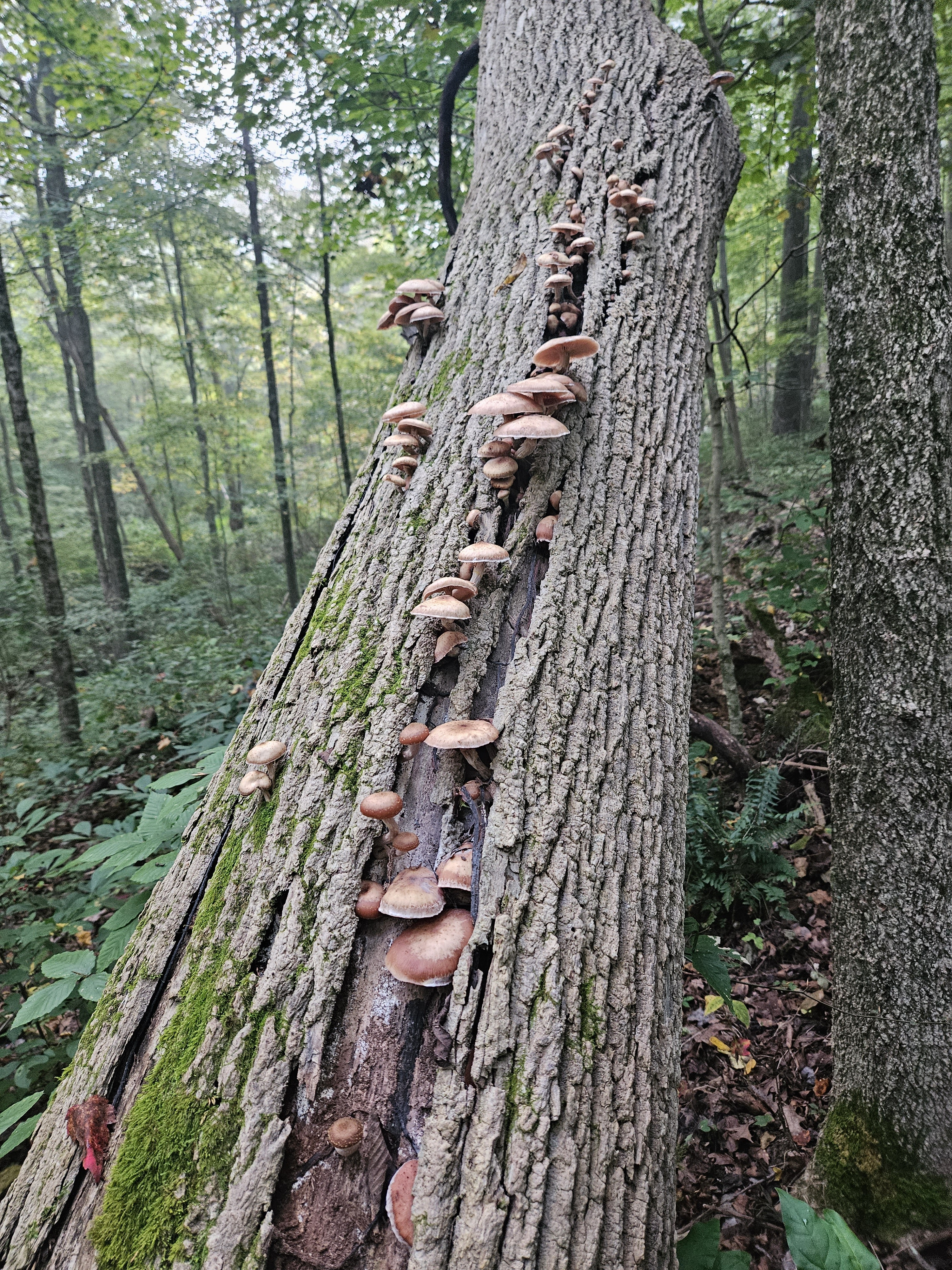Looks like Armillaria but beware of Galerina marginata.
Mycology
Take a spore print to differentiate between these two easily
I was able to do a spore print, and it looks like they're white. If my research is correct, that means it's a honey fungus, right?

Looks like A. gallica to me, up to you to make sure tho
I won't eat any either way, because I'm just too new at this stuff, but I think it's fun to try and identify it.
I'm pretty sure it's not A. gallica because it looks like the hymenium are subdecurrent to me. Wikipedia says that A. gallica has adnate hymenium.
I'm thinking it's maybe it's A. mellea since it can have either type. But I'll keep researching it to make sure.
In general it would look very yellow if it were A. mellea.
Kuo (mushroomexpert.com) describes gills as: "Running down the stem or nearly so; close; short-gills frequent; whitish, discoloring pinkish to brownish."
Here's an actual key: https://botit.botany.wisc.edu/toms_fungi/armkey.html which seems to give A. gemina.
Thanks for the info. I'm beginnng to realize how difficult this stuff can get, haha! Not sure how to tell if an annulus is wooly or a pileus is scaly. Looking at the pictures, A. gallica actually does look like the ones I saw. Idk though, maybe if I had a microscope and some more experience, I'd be able to tell better.
Anyway, thanks again for all your help! I've been learning a lot through this stuff.
Underside

Perhaps a honey fungus?
